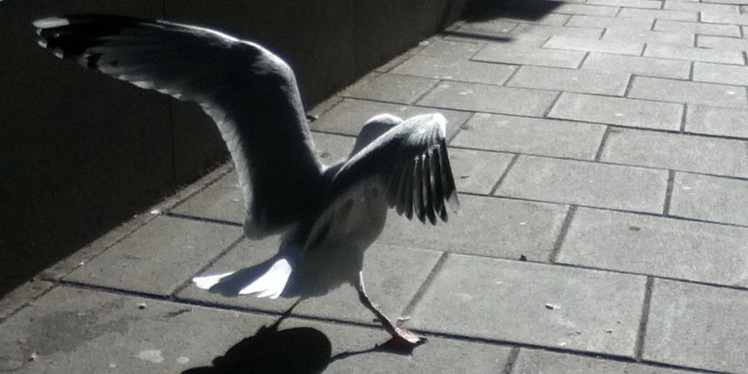A new weapon in the fight against problem gulls and pigeons is almost here and the future is yellow.
Recent developments in the battle against nesting and scavenging birds have seen some outlandish methods proposed to move them on.
Councils across Courier Country are watching any progress closely, with Angus Council keen to keep seaside towns like Arbroath and Carnoustie free of nests and associated detritus.
A jelly-like substance is now being tested, the sight of which is thought to make birds throw a wobbler.
Asian firm JJ Bio manufactures the Bird Free Fire Gel, which birds interpret as flames on the UV spectrum.
Ross Graham and Reg Henderson of Graham Environmental Services showed The Courier how the gel works.
Mr Graham said: ”Pest control has had the same methods for a long time guns, nets, traps, poisons, that sort of thing.
”To see an actual innovation like this is very uncommon. I encountered a gentleman from South Korea at PestEx, a trade exhibition, last year.
”At first I thought he was having me on, but the experiences of other firms support the product’s effectiveness.”InnovationSenior infrastructure services manager Stewart Ball said the council is testing the substance in a couple of areas, and results have been positive so far.
”As far as I am aware, this is the first trial of the fire gel in Scotland,” he said. ”It’s very early days for this but the results seem to be positive.
”One of the great things about it is that it’s not hazardous and made out of food-grade oils and the like.
”We’re always on the lookout for new ways to control pests but this wouldn’t replace everything we use normally.
”It could be a powerful tool, though.”
The gel is advertised as having a threefold deterrent to birds, as its smell is also said to be abhorrent to them, and contact with the surface causes them to feel a stinging sensation.
It is a passive and non-harmful alternative to traditional methods, however, and the UK Health and Safety Executive has passed the product as safe for humans.DeterrentThe council’s crop of control measures include the free nest removal service for domestic premises, flying of birds of prey during the breeding season in urban areas and year-round flying at the council’s landfill sites, a 30-yard radius litter-picking requirement on fast food outlets, and frequent emptying of litter bins in the busiest town centre and seafront locations.
The council also holds a general licence to cull but has not used it so far and chief executive Richard Stiff has said it will remain a last resort.
Arbroath man Ian Watson’s idea to make seagulls see red is also being tried out in areas of his town.
Mr Watson has employed ”gull whispering” tactics to seemingly great effect, and a demonstration last month saw the council agree to painting red patches at problem spots.
It is thought the colour is repellent to the birds, but it is unknown whether Angus towns may also get green patches to supplement the red and yellow, so birds know where to ”go”.
